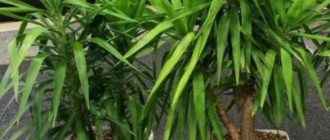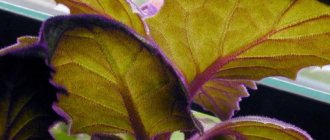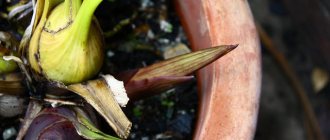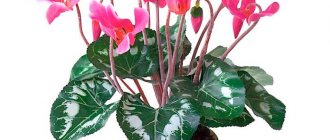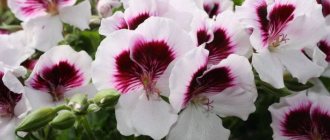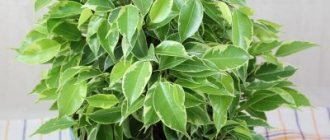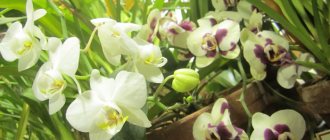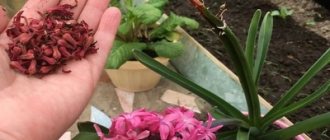An evergreen plant such as abelia (Abelia) is presented in the form of a shrub. Moreover, these deciduous bushes are not very tall. It belongs to the Linnaeaceae family. In the wild, abelia can be found in Mexico and Southeast Asia. This genus was named after the doctor Clark Abel, who was an Englishman and worked in China in the 19th century.
This beautiful flowering shrub has dark green foliage. These shiny leaves are arranged oppositely and have short petioles. Fragrant flowers, funnel-shaped or bell-shaped, are located on the apical and axillary peduncles. The oblong-shaped flowers consist of petals, the edges of which are slightly bent. They come in light pink or white color. The leathery small fruits, which have a curved or oblong shape, contain 1 seed.
This flower is often grown in greenhouses or used to decorate spacious rooms.
Description of the plant
Abelia (Abélia) is a deciduous or evergreen (semi-evergreen) slowly growing shrub with a height and diameter of usually one and a half to two and a half meters (sometimes up to six meters). The genus is named after Clark Abel (1780-1826), an English physician, botanist and zoologist, researcher of the flora and fauna of China, India, and Indonesia.
The leaves of the plant are opposite, paired, oval, pointed, usually dark green, shiny. The flowers are tubular (funnel-shaped, bell-shaped), five-lobed, fragrant. Usually small; the largest flowers - about 5 cm in diameter - are found in the species Abelia floribunda. There are five petals, they are usually white or pink, sometimes purple.
This plant, fascinating with its lush color, belongs to the Linnaeaceae subfamily of the Honeysuckle family (Caprifoliaceae). The genus is named after Clark Abel, an English physician, botanist and zoologist, researcher of the flora and fauna of China and India.
Abelia in the garden
Abelia is one of the most popular garden plants. Abelia is luxurious in the garden and blooms from June to September-October in the summer. There are both heat-loving species and fairly frost-resistant species.
Characteristics and description of the flower
The East appreciates beauty. The delightful Asian plant Abelia consists of thirty varieties and a large set of varieties, which breeders periodically improve. The genus belongs to permanently green shrubs, adapted to various climatic conditions.
The varieties also include small trees with opposite short-petioled foliage and fragrant flowers in the form of bells or funnels, after which tiny leathery fruits with a single grain ripen. The crop is grown at home. Squares, parks, and private areas are decorated with colorful lush plants.
Abelia is planted both in single plantings and in group plantings. Often used in design solutions and hedges. Such plantings retain their decorative appearance even after flowering. Pedicels with purple sepals remain on the bushes, which decorate the plant for a long time.
Abelia as a hedge
Abelia belongs to the honeysuckle family, and domestic species are called indoor honeysuckle. As a result of selection, hybrid, constantly flowering varieties were bred. But the flower, like all cultivated plants, has its own characteristic distinctive features:
- The leaf blades always have an opposite shape, a dark green color, a smooth shiny surface and short petioles.
- Peduncles are located on the tops and axils of the plant, emit a strong aroma and bloom in the form of a small bell or funnel. The inflorescences are painted in soft tones, snow-white or pale pink.
- The plant blooms long and profusely; in warm indoor spaces, flowering continues from mid-autumn to early summer.
Wild species of Abelia growing in their natural environment look very elegant and attractive. Artificially bred domestic and garden varieties are intended for ornamental cultivation, but some varieties growing in central Russia often freeze out.
There are hybrids that thrive in cooler climates. But if they discuss the cultivation of Abelia in our latitudes, they usually mean indoor plants. Although some flower shrubs feel excellent both in spacious, well-lit rooms and in garden plots.
Abelia indoor
Abelia: soil and replanting
The soil for abelia should be well-drained, slightly acidic with a pH of 5.5 to 7.2. The alkaline environment of the soil can lead to a lack of nutrients, which can cause the plant's leaves to turn yellow. Clay and loamy fertile soils are suitable. To plant a plant, you can take turf soil mixed with humus, deciduous soil and sand in equal parts.
Attention!!!
Since the plant is characterized by strong growth, two transshipments are necessary during the summer. Potted specimens can be replanted after two to three years.
Selecting a substrate and fertilizing
Abelia can grow in different soils, but most of all it likes acidified soils. The flower feels great in drained substrates. You can buy soil for planting at a specialty store or prepare it yourself.
To do this you need to connect:
- rough soil;
- leaf soil;
- fine sand;
- a small part of humus;
- peat.
In order to maintain the required level of acidity in the substrate, you should add a small amount of crushed pine bark to the soil.
As for fertilizer, the mixture should be applied twice a month in spring and summer. It is at this time that the bush develops best. At the end of autumn, all fertilizing must be canceled. This is necessary so that the bush can regain its strength during the winter months. To fertilize abelia, it is best to use organic matter. But if this is not possible, then mineral products can also be used.
Abelia: care and reproduction
Caring for abelia is very simple; in the spring, dry shoots are removed from the plant, and long shoots are shortened to half. Abelia can withstand heavy pruning and can therefore be used to create a hedge.
Abelia reproduction
Abelia is propagated using young semi-lignified stem or apical cuttings, which are taken in July-August. Cut cuttings about 5 cm long and plant them in wet sand. The cuttings grow quickly; after two to three weeks they take root in a mixture consisting of sand, peat, and perlite. Young plants grow quickly and form a beautiful bush that needs to be shaped from time to time.
On a note!!!
Abelia flowers bloom until late autumn, which makes many gardeners want to have this plant in their garden.
Many species and varieties of abelia produce root shoots that are best suited for propagation. Young shoots are dug up with part of the root in the spring and transplanted to a new location.
Abelia can be propagated by seeds. Sowing of seed material is carried out in January. Seedlings grow quickly, and young plants can bloom in the same year.
Reproduction methods
Plant propagation is possible in two ways: cuttings and seeds.
Cuttings remain after spring pruning. Rapid root growth is observed in light soils. Containers with seedlings are transferred to a warm room.
Seeds are sown in mid-winter. Shoots appear quickly enough and grow rapidly. They need to be cared for in the same way as an adult plant.
Growing this plant is a simple and interesting process. The plant is distinguished by long and beautiful flowering, so it often decorates gardens and landscape compositions.
Abelia: care at home
Abelia at home is a relatively small plant with thin, long, drooping shoots colored pink and white. In adult plants, the length of shoots reaches one meter or more.
Indoor abelia
The small, oblong leaves, pointed at the top, located oppositely on the shoots, look unusual. Abelia is placed on windows facing south. In winter, it is advisable to create artificial lighting for the plant with fluorescent lamps. In summer, the flower can be taken out into the fresh air.
7.Transplant
Shrubs are planted in fresh soil approximately once a year - in the spring, with the beginning of new growth. Abelia grows very quickly and fills the volume of the pot. When replanting, carefully inspect the root system and trim damaged roots if necessary. For planting, select a pot with large drainage holes; for young plants, the volume of the container is gradually increased every year.
↑ Up,
Abelia: diseases
Abelia, like all other asthenia, is often attacked by pests and sometimes gets sick.
Aphid on abelia
Aphids often cause significant damage to young abelia bushes. One of the most harmless methods for fighting aphids is green potassium soap, 20 g of which is diluted in 1 liter of water and the plant is washed, covering the pot with soil with a film. Laundry soap is also harmful to aphids.
A good effect is achieved by the use of synthetic pyrethroids, which include a large group of drugs. The most common are decis and carat. The dosage and method of use are usually indicated on the packaging. The advantage of pyrethroids is their low toxicity.
Mob on abelia
Black spots often develop on the sugary secretions of abelia covering the leaves.
Insects are carefully cleaned from branches, leaves and stems with hard brushes, and the plants are treated with Vertimek solution every 5-6 days for 3 weeks.
spider mites and thrips
The plant is often affected by spider mites and thrips. To combat the pest, the drugs Vertimek, Nurell-D, and Mavrik are used.
A good remedy for spider mites is a decoction of cyclamen tubers. The active ingredient of cyclamen is saponin. To prepare the decoction, 50 g of tubers are dipped in 0.5 liters of water and boiled until they are boiled. The liquid is filtered through gauze, then the trunk, twigs and leaves affected by the mite are smeared with a brush. After 5-6 days, the treatment is repeated, after which all pests disappear.
A solution of Persian chamomile and green soap works: per liter of water you need 4 g of green soap and 5 g of chamomile infusion. Plants are sprayed with this liquid and washed with warm water after 24 hours. It is necessary to fight the tick until it is completely destroyed.
Abelia in the garden and at home brings gardeners a lot of joy. As a result of a little effort, the collection of plants can be supplemented with beautiful abelia, which will delight every day with its flowering.
Pests and diseases
Plants can be affected by powdery mildew. Most often this happens in cold rooms with insufficient ventilation. Excessive watering often causes plants to rot. If rot appears on the abelia, it should be treated with fungicidal preparations.
The lack of flowering of domestic abelia may be due to insufficient lighting. Due to the fact that bushes prefer acidic soil, in alkaline soil they can suffer from chlorosis and slow down their growth rate. Sudden changes in conditions and temperature fluctuations can cause leaves to drop.
In addition, pests can settle on abelia. These include aphids, thrips, spider mites, scale insects and mealybugs.
Abelia: species
More than 30 species of this plant are known. The most common are Abelia chinensis, Abelia grandiflora, Abelia variegata, Abelia koreista, Abelia kaleidoscope, Abelia grandiflora, Abelia variegata and many others. Some types of abelia are grown as ornamental plants.
Abelia x grandiflora
This hybrid shrub is semi-evergreen (depending on humidity levels and temperature). When grown at home, abelia of this most common species has long, thin, drooping shoots.
Abelia x grandiflora
On a note!!!
It is noteworthy that while the plant is young, its shoots have a light pink tint.
The oppositely located small leaves have an oblong shape, pointed upward. These shiny leaves are dark green in color. The fragrant, fairly large axillary flowers are five-petaled and fused. The flowers collected in an inflorescence are painted white. Flowering is very long and abundant.
The most popular varieties:
- Francis Mason is a not very tall shrub with golden leaves.
- Edward Goucher - has red-purple leaves reaching 2 centimeters in length.
Chinese Abelia (Abelia chinensis)
This rather tall (up to 2 m) semi-evergreen shrub has many drooping and very graceful shoots. Its dark green leaves have an oval-pointed shape. And its bell-shaped flowers are white with small red streaks.
Chinese Abelia (Abelia chinensis)
Abelia floribunda
This evergreen shrub has pubescent light red stems as well as shiny dark green leaves that are quite wide. Quite long (up to 4 centimeters), fragrant bright pink flowers have a funnel shape. This abelia begins to bloom in May or June. Flowering lasts for several months in a row.
Abelia floribunda
Abelia shumannii
This delicate shrub is deciduous. Its oval leaves are dark green. Its flowers are lilac-pink, and flowering lasts from June to September.
Abelia shumannii
Abelia triflora
This deciduous and fairly resilient shrub sometimes has the size of a small tree. Its lanceolate leaves are dark green. Flowering begins in June. The flowers are pale pink in color.
Abelia triflora
Abelia mosanensis
The plant with the earliest flowering among abelias. Flowers with a pleasant jasmine scent, soft pink, tubular, collected in large inflorescences. The leaves are green, lanceolate, slightly bent along the central vein, the leaf blades are glossy. It is considered the most frost-resistant species.
Abelia mosanica
The flower has a stunning floral scent of a subtle blend of lilac, hyacinth and jasmine. The flowers are white, as if waxy, and bloom in late spring. Flowering lasts until early June. A hardy species, resistant to frost down to minus 15 °C.
Korean Abelia (Abelia biflora)
The most winter-hardy tall species that does not require shelter. Grows on rocky slopes, cliffs, among bushes, in the forests of the Russian Far East (southern part), northwestern China and Korea.
Abelia korean
The Korean abelia shrub grows slowly and reaches a height of 1 to 2.5 meters, has elongated ovate or lanceolate leaves 2.5 - 6.5 cm long and 1 - 3.5 cm wide. The flowers are tubular, rather small - about 2 cm. Blooms in June for three weeks to a month.
Abelia Kaleidoscope
This variety was recently bred and belongs to the large-flowered type. A distinctive feature of this species is the extremely varied color of the foliage - young spring leaves have a light green tint, over time they darken a little, and in summer they become golden yellow.
Abelia Kaleidoscope
In autumn, the plant decorates itself with a bright purple outfit. The center of the leaf blade is usually dark in color, such as brown. The flowers are large, fragrant, white or slightly pinkish.
Abelia corymbosa
A small shrub with a lush, rounded crown formed by many thin and flexible shoots. The leaves are dark green, hard, leaf blades with small teeth along the edge. The flowers are white or pink, tubular, with 5 rounded petals, fragrant, collected in large inflorescences - corymbs.
Abelia corymbosa
Abelia Edward Goucher
The shrub is distinguished by a very long flowering period and the color of the buds - they can be pink and even burgundy. Young leaves that appear at the tops of the stems are copper-brown, while adults have a dark green color, which changes to a bronze tint in autumn.
Abelia Edward Goucher
Abelia Lavender Mist
A compact shrub with glaucous foliage that turns purplish-red in autumn and deep purple in winter. The flowers are lavender and white, characterized by two flowering periods in June and August.
Abelia Little Richard
Abundantly flowering dwarf round and dense bush. The green leaves turn orange-pink in the fall.
Abelia Frances Mason
A dwarf variegated variety with yellow-green foliage.
Abelia Mardi Gras
The size of the variegated variety is 50-80 cm in height and a meter in width. The leaves are colored pink, green and white. After frost, the bush becomes copper in color. The flowers are fragrant, pink.
The group of varieties with golden foliage stands out especially. Sedi them:
- "Keats gold";
- "Super Gold";
- "Little Gold"
Abelia is a beautiful shrub that can decorate any flower bed or flower garden. And if the area allows, it must be planted in the garden area.
2.Description - what abelia looks like
About 30 deciduous and evergreen multi-stemmed ornamental flowering shrubs and many hybrids are known.
Abelia is an ornamental deciduous in harsh climates or evergreen in mild climates shrubs with densely pubescent branches, bred for its beautiful and fragrant flowers and long and abundant flowering.
The leaves are simple, ovate, oppositely arranged in whorls of three, ovate, shiny, dark green, 1.5 - 8 cm long, on short petioles. In autumn they turn bronze-purple.
Flowers appear in the upper axils of the leaves and ends of the stem, the inflorescence - panicle contains 1 - 8 bell-shaped flowers, with five-lobed corollas, 1 - 5 cm long, and, as a rule, fragrant. The plant produces the most intense honey aroma in the evening. The flowers often exceed the leaf blades in size. An interesting feature is that the aroma of the flowers varies among different varieties - some smell very intensely of lilac, while others emit a very light, barely noticeable sweetish aroma - for example, Abelia variegata.
↑ Up,
Photo: JACLOU-DL
Dimensions of Abelia domestica. The height and diameter of the bush can reach from 1 to 2 meters.
Growing in the garden
Abelia: location and soil
The site for planting abelia is chosen in light partial shade or sunlit. But it must be protected from winds and drafts. On hot summer days it needs shading. The soil needs to be light, fertile, water- and breathable, neutral or slightly acidic. Quite rich in mineral salts. To fill the planting hole, prepare a soil mixture of turf, leaf soil, peat, sand and humus. But at the bottom of the pit, drainage must be made of broken bricks or coarse gravel.
Planting and care
Abelia can be planted both in spring and early autumn. It is important that the plant has time to take root and adapt to new conditions. After planting, shorten all shoots to 15-20 cm, and water the plant abundantly.
To prevent the tree trunk circle from becoming overgrown with weeds, to ensure good air exchange, and to retain moisture, mulch with pine bark. The bark, among other things, will help maintain the slightly acidic reaction of the soil solution.
Watering
Abelia cannot be called a very fastidious plant, because it can tolerate short-term drought. But after planting, until full adaptation, young bushes need regular watering. At the same time, one should not allow the soil to dry out for a long time, or excessive waterlogging and stagnation of moisture. As a rule, they are guided by the condition of the soil in the tree trunk circle. If the soil has dried to a depth of 6-7 cm, watering is required. For adult plants, depending on the weather, watering is carried out once every 2 weeks. In hot weather and drought - more often.
Feeding
To maintain its beauty and decorativeness, abelia needs feeding. In early spring and early autumn, humus is introduced into the tree trunk circle, well embedded in the soil. During the growing season, it is a good idea to feed ornamental shrubs with complex fertilizer; it is better to use those intended for azaleas or rhododendrons.
Abelia: pruning
Abelia needs regular pruning because its shoots grow very quickly and need to be kept in shape. At the end of flowering, remove old and injured shoots. Pruning also helps to rejuvenate bushes.
Preparing for winter
The shrub is quite frost-resistant and overwinters well under snow cover. But it’s better to play it safe and cover it with spruce branches or tie the shoots and wrap them in several layers with lutrasil.


